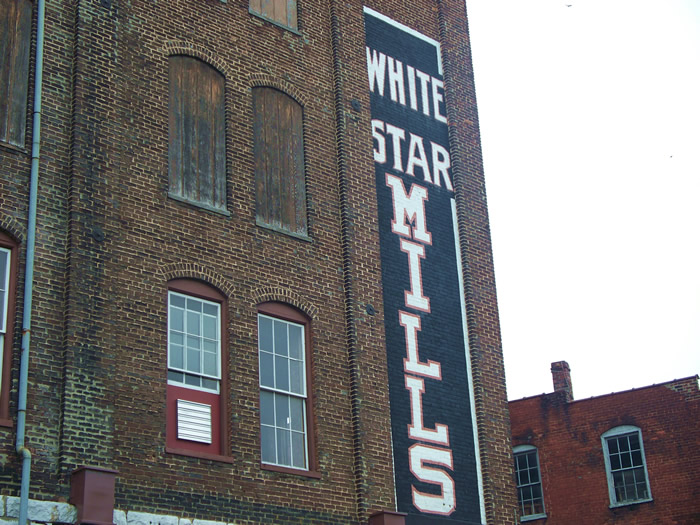
White Star Mills
Augusta Co. | Virginia | USA
Watersource: Steam powered, then electrified.
White Star Mills
This mill is located on Mill Street in the center of Staunton. Mill Street connects the south end of one-way S. New Street/Sh 11 with Greenville Ave/Sh 11 by the north edge of the Chesapeake Western Railway/CSX Railroad tracks.

The stones for the foundation of the mill opened for operation in 1890, were brought from a local quarry.
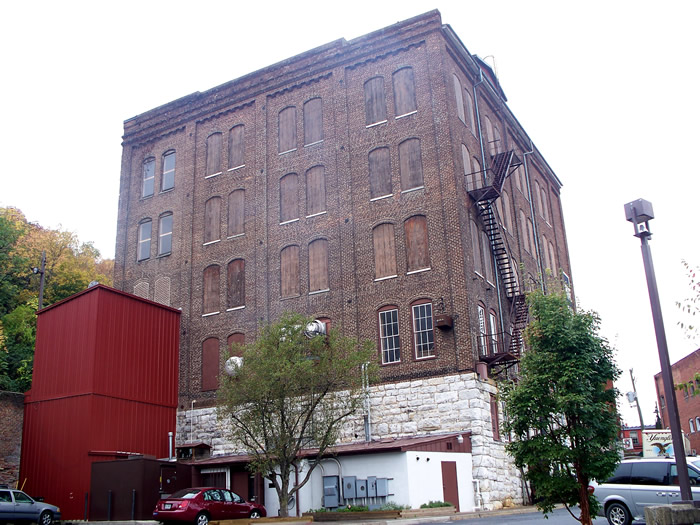
The bricks were made locally of native clay and straw and the beams, of chestnut, are almost all that is left of the local supoply of chestnut that was pretty much decimated by the "chestnut blight" from Asia that killed almost all the chestnut trees in the southern and eastern states in the early-mid 1900's.
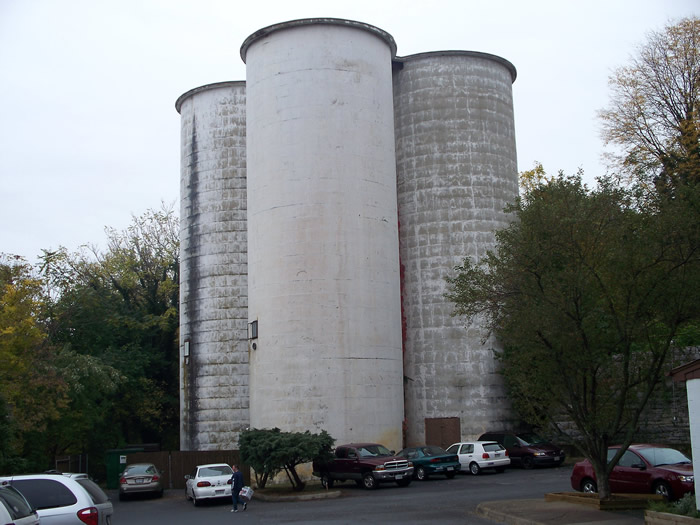
The six story brick mill with it's concrete silos, once housed a flour mill, a feed mill, storage space, an art galery and now The Mill Street Grill, open since 1992.
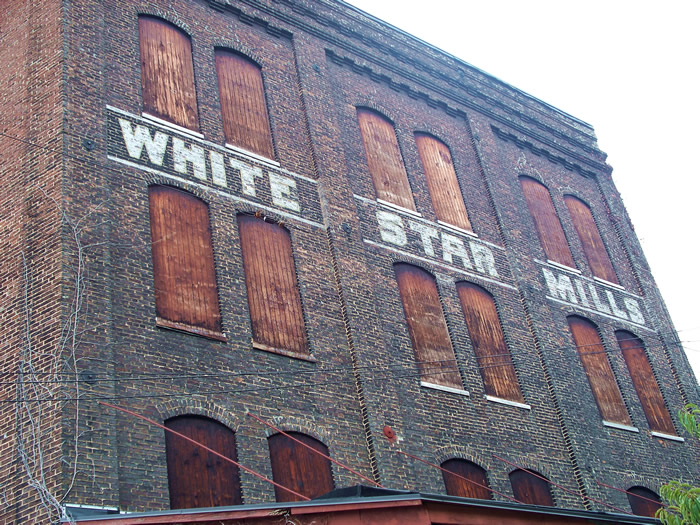
Six panels of stained glass depict the journey of wheat from harvest through the final loaf of bread. Fieldstone walls grace the dining area, along with framed flour and feed sacks.
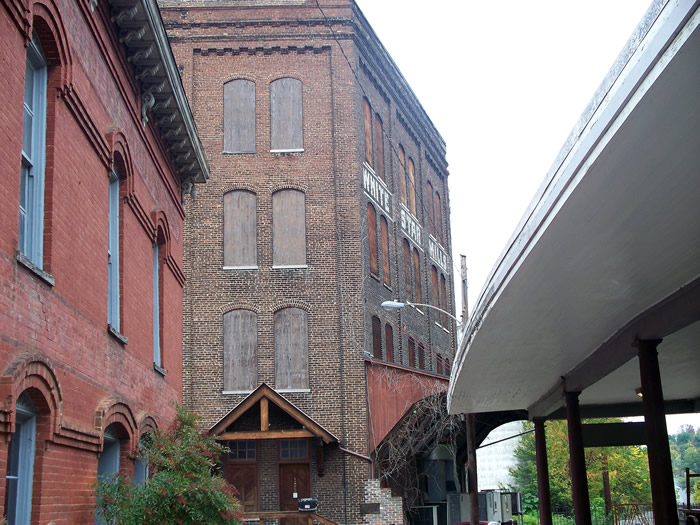
The white concrete silos date from 1957-1961. The unique trapezoidal-shaped mill, once one of the largest in the valley, closed in 1966. The silos functioned to move the grain to and from rail cars and into and out of the mill, also providing grain storage when nescessary.
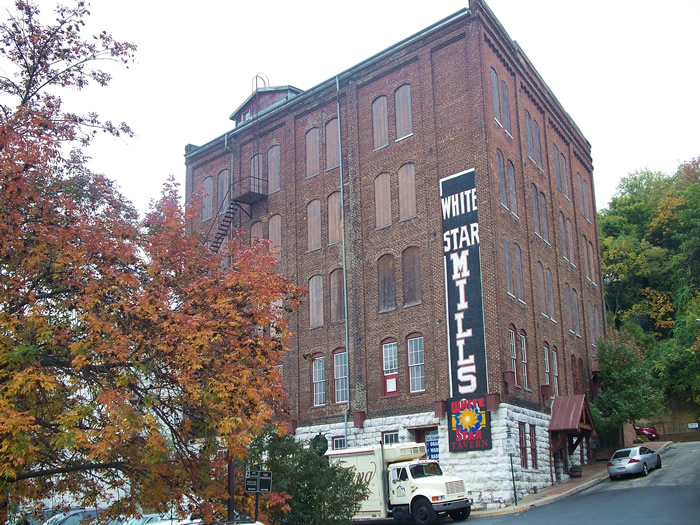
The mill was designed by T.J. Collins & Son, who designed and remodeled over 200 other building in Staunton. The Head house on the top of the mill related closely with the functioning of the mill. The head house provides space for the elevators to move the grain above the milling equipment on the top floor. The milling process continued as the grain worked its way downward through the mill. Flour chutes and machinery were all removed in the 1970's. Mr M. Erskine Miller sold the lot for the mill to Isaac Witz, Charles A. Holt, Andrew Bowling, and Michael Kivlighan on Jan, 1892. The mill was built 1892-93-valued at $11,000 in 1893 with improvements added . Hamilton Investment bought the mill from J. Harold Kivlighan and Catherine Holt Lakens, it was still owned by descendents of the original owners.
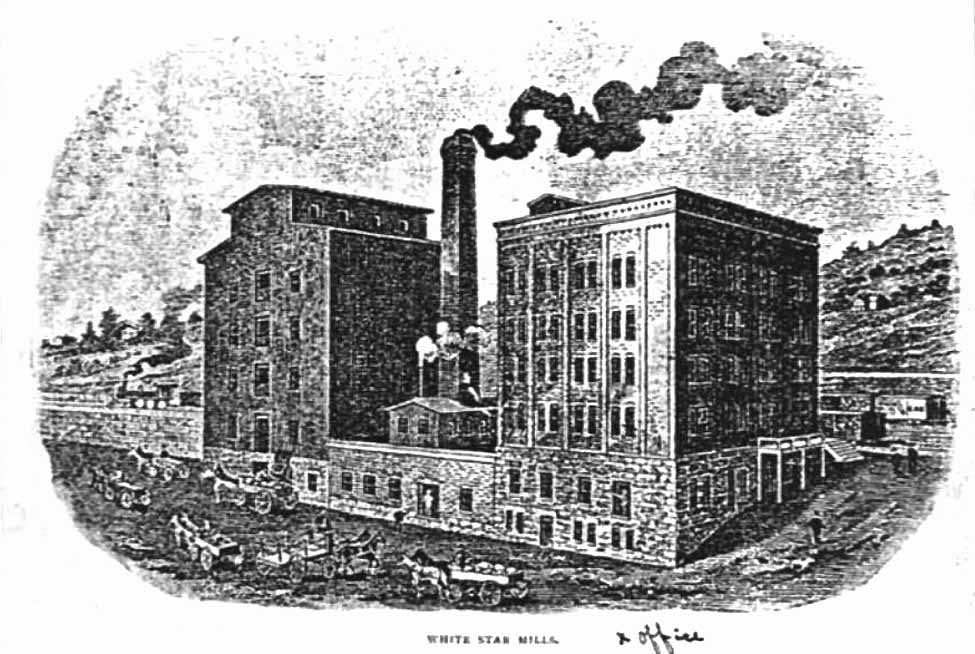
*Update: This old engraving of the mill has been reproduced in a number of publications old and new. Contributed by Ted R. Hazen Aug. 2010*